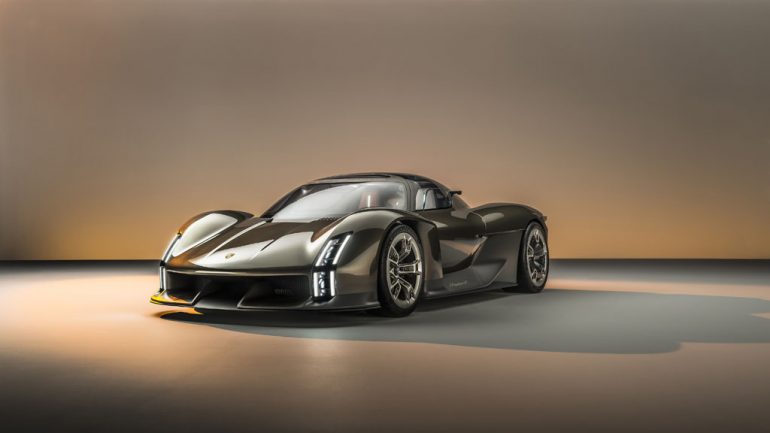
Introducing the Porsche Mission X concept, a captivating vision of what lies ahead for the renowned automaker. While not slated for commercial release and not positioned as the next hypercar from Porsche, this battery-electric two-seater with its “ultra high-performance” powertrain offers tantalizing insights into the brand’s future direction.
The exterior design of the Mission X is a stunning combination of classic and contemporary elements. Adorned in a specially created Rocket Metallic shade, complemented by satin carbon fiber accents, the concept shares similar dimensions to the iconic 2003 Carrera GT and 2013 918 Spyder. Measuring 177 inches in length and 78.7 inches in width, it occupies a space akin to its predecessors. The large 20-inch front wheels and 21-inch rear wheels dominate the side profile, accounting for almost half of the vehicle’s 47.2-inch height. As a celebration of the brand’s 75th anniversary, historical cues merge seamlessly with modern touches. Notably, the illuminated daytime running lights (DRLs) featured in the photos reimagine the iconic four-point signature seen on Porsche’s road cars. Furthermore, the DRLs, along with the four LED main beams concealed within the lattice support structure, pay homage to the stacked double headlights of legendary Le Mans racers like the 906 and 908. To enter the vehicle, passengers are greeted by upward and forward-swinging doors reminiscent of top-class Le Mans prototypes, while the seating area is cocooned beneath a glass dome constructed around a carbon fiber reinforced plastic skeleton. The Mission X also debuts Porsche’s new crest, a symbol of the brand’s evolution.
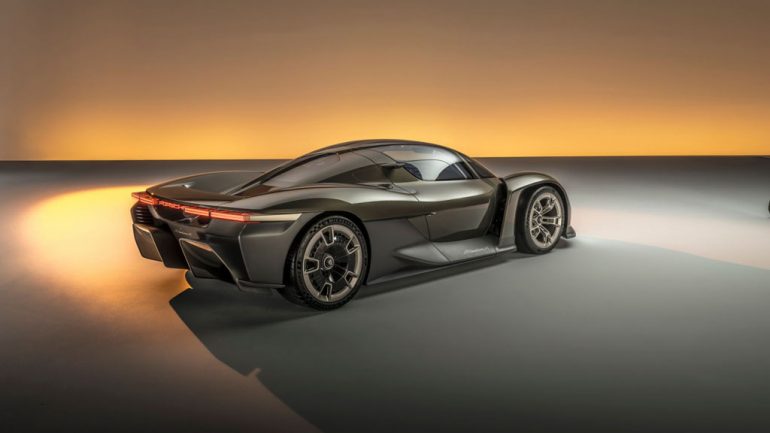
The rear of the Mission X concept embodies a contemporary aesthetic. A horizontal lattice structure supports slim, intricate LED taillights that enclose a floating, illuminated Porsche logo. During the charging process, the letter “E” pulsates in white, further highlighting the car’s electric nature.
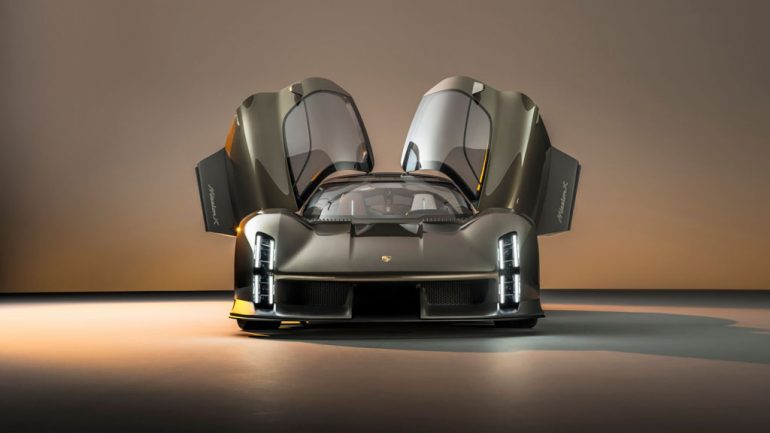
The interior of the Mission X exudes an undeniable sense of speed and performance, captivating onlookers. The carbon-backed seats, equipped with six-point harnesses, seamlessly integrate into the cabin. The driver’s seat distinguishes itself with a combination of Kalahari Gray and Andalusia Brown, while both seats exude an alluring aura. Positioned behind the steering yoke are four paddles whose specific functions are not yet disclosed, though regenerative braking appears to be a plausible guess. An ornate stopwatch, designed by Porsche Design, is located in front of the passenger and can be detached via a bayonet system on the instrument panel. This stopwatch can be utilized in conjunction with the built-in cameras for track purposes. Furthermore, there is speculation that this area could accommodate additional accessories, such as a screen, for non-track usage.
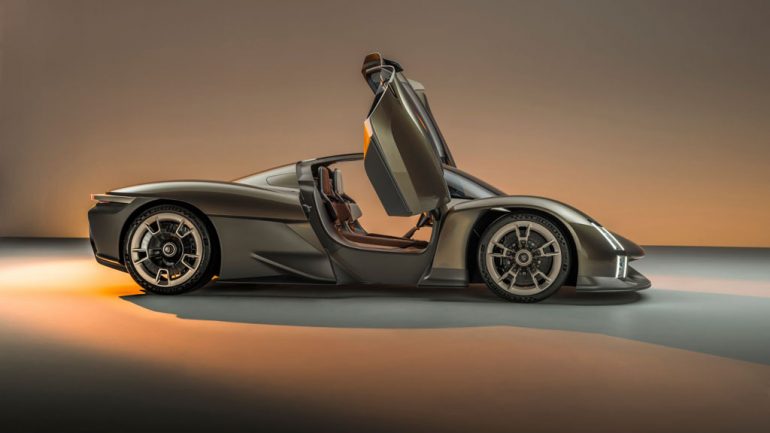
While Porsche has labeled the Mission X as a “reinterpretation of a hypercar,” specific details about its drivetrain and performance specifications remain undisclosed. However, it has been revealed that the battery configuration mirrors the dynamics of a mid-engined vehicle, employing an “e-core” setup. If the street-legal coupe were to enter production, Porsche envisions it as the fastest road-legal vehicle around the Nürburgring Nordschleife. The target is to achieve a power-to-weight ratio of approximately one horsepower per 2.2 pounds and deliver superior downforce capabilities surpassing those of the current 911 GT3 RS. Moreover, the Mission X aims to offer significantly improved charging performance with its 900-volt system architecture, potentially charging twice as fast as Porsche’s current flagship, the Taycan Turbo S.
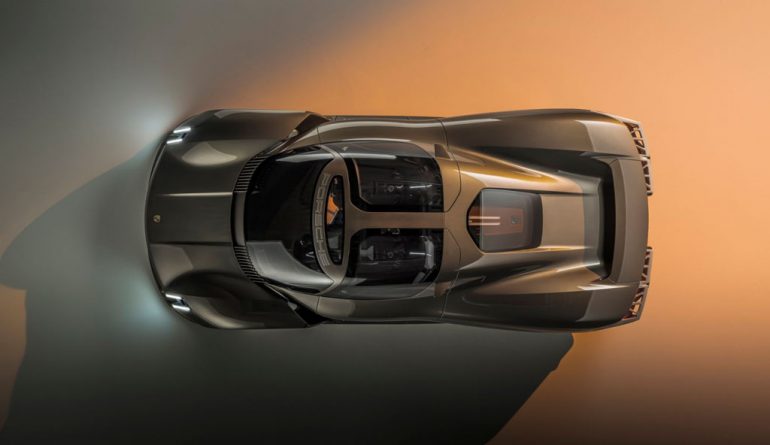
Drawing inspiration from the Mercedes-AMG One, the Mission X has its sights set on surpassing the Nürburgring lap record of 6:35.18, currently held by its fellow Stuttgart hypercar manufacturer. This record is approximately 22 seconds faster than the 918 Spyder, which was the first production car to break the seven-minute barrier.
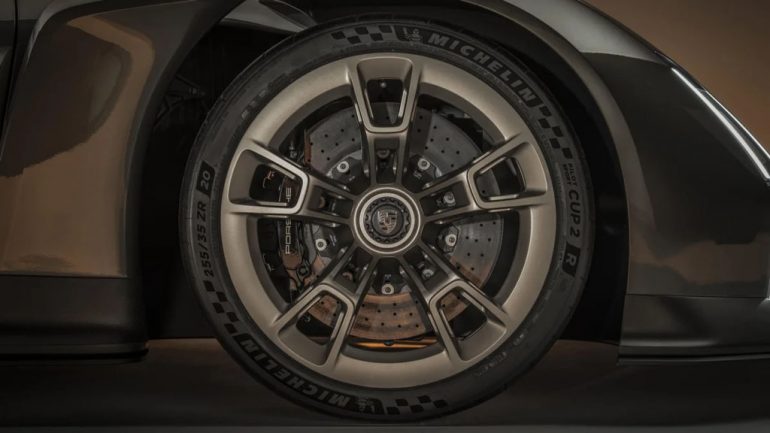
Given that the power-to-weight ratio is measured in metric horsepower, estimating the Mission X’s output becomes an intriguing exercise. Considering the weight of electric hypercars like the Rimac Nevera, which weighs around 5,070 pounds or 2,300 kilograms, it is conceivable that the Mission X could range from 1,700 horsepower to as much as 2,300 horsepower.
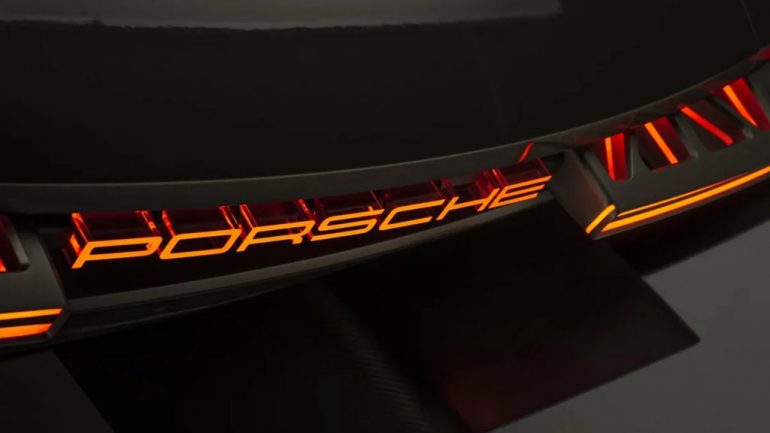
In terms of aerodynamics, while the GT3 RS achieves a maximum of 860 kilograms (1,896 pounds) of downforce through the use of a prominent wing and additional aero elements, the Mission X appears to conceal its chicanery beneath its undisturbed glasshouse and sleek upper surfaces.
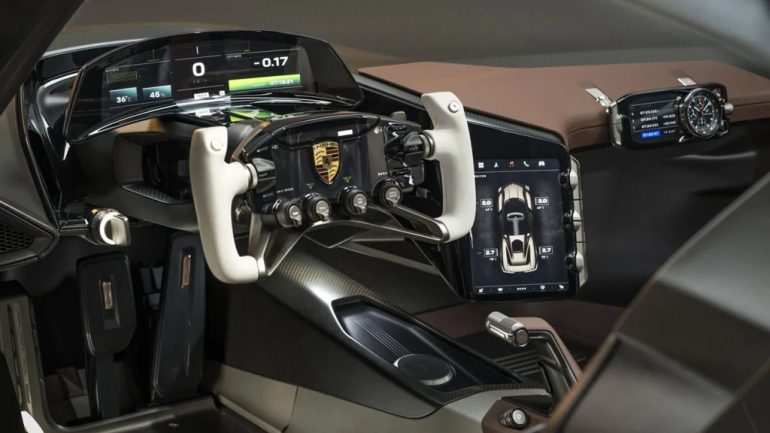
The Mission X concept demonstrates the potential for remarkable charging capabilities, as the Taycan Turbo S already achieves a maximum charging rate of 270 kilowatts, allowing it to reach 80% state of charge from 5% in just over 20 minutes. Hence, it can be inferred that the Mission X’s charging speed will be equally impressive.
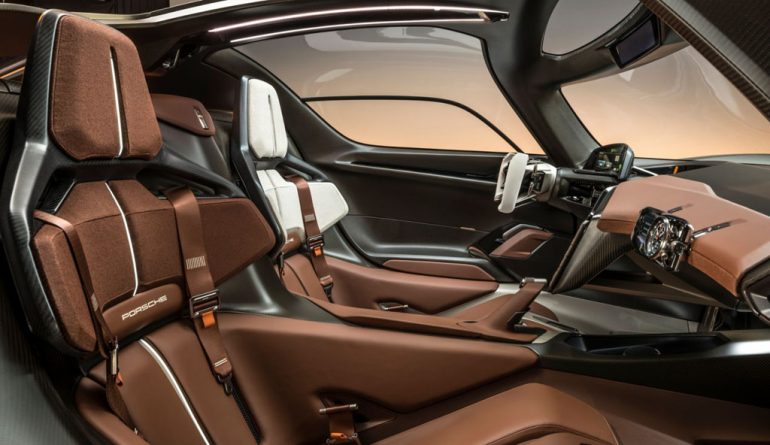
Regarding the likelihood of a production version, Porsche has stated that the decision will be made in due course. Undoubtedly, Porsche headquarters have received numerous inquiries with offers from eager enthusiasts. It is difficult to imagine Porsche passing up the opportunity to celebrate its birthday with a captivating new concept, offer exclusive treats to its most valued clients, create icons for future generations, and garner substantial acclaim.